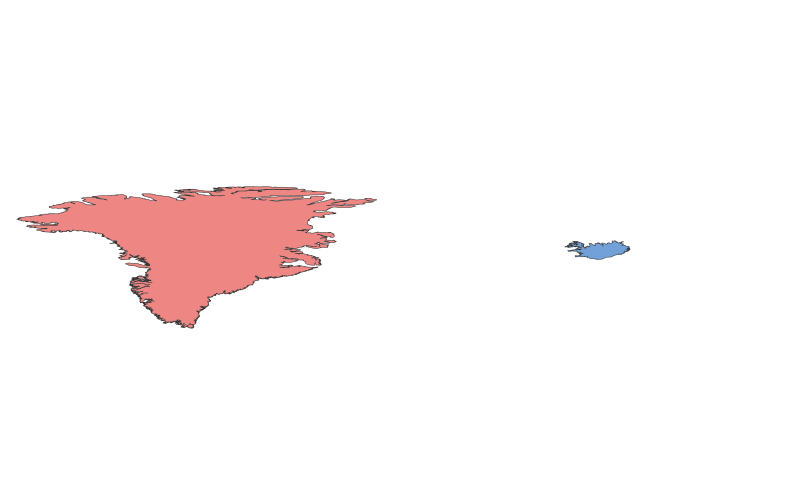Groenlandia vs. Islandia: Una Comparación Geográfica

Tabla Comparativa
| Categoría | Groenlandia | Islandia |
|---|---|---|
| Ubicación | Entre el Océano Ártico y Atlántico | Norte del Océano Atlántico |
| Tamaño | 2,166,086 km² (la isla más grande) | 103,000 km² |
| Clima | Polar y subpolar | Templado subpolar, influencia marina |
| Recursos naturales | Hielo, minerales, pesca | Energía geotérmica, pesca |
| Desarrollo urbano | Población dispersa, pocas ciudades | Capital Reikiavik, ciudades más desarrolladas |
| Transporte | Aviones y barcos (sin carreteras) | Carreteras, vuelos internacionales |
Descripción Detallada
Groenlandia
Historia y Cultura:
Groenlandia, parte del Reino de Dinamarca, tiene una historia vinculada a los inuit y los vikingos. Su cultura es una mezcla de tradiciones indígenas y europeas. Aunque es autónoma, depende económicamente de Dinamarca.
Economía:
La economía se basa en la pesca y la exportación de camarones. El turismo está creciendo, pero el clima extremo limita su desarrollo. Los recursos minerales son abundantes pero difíciles de explotar.
Naturaleza:
Dominada por capas de hielo, Groenlandia es famosa por sus auroras boreales y vida silvestre única, como ballenas y osos polares.
Islandia
Historia y Cultura:
Islandia fue colonizada por vikingos en el siglo IX. Su cultura preserva sagas medievales y una fuerte identidad nórdica. Es independiente desde 1944.
Economía:
Islandia tiene una economía diversificada, con pesca, energía geotérmica y turismo como pilares. Es líder en energías renovables.
Naturaleza:
Con volcanes, géiseres y glaciares, Islandia es un destino popular para aventureros. Su paisaje es dramático y accesible, con carreteras bien mantenidas.